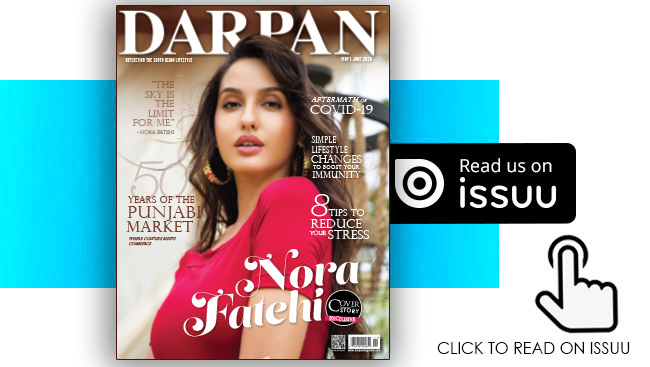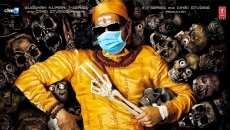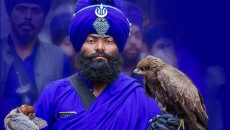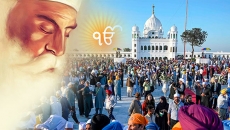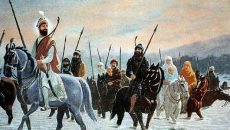A historically significant landmark for every cultural ethnicity – a place where belonging, identity, commerce, language and food come together.

Testament to Canada’s multicultural fabric and a growing symbol of the South Asian community’s heritage, is Vancouver’s Punjabi Market. The Punjabi Market is a three-block commercial district along Main Street between 48th and 51st Avenues that has been a destination for South Asian culture and commerce. As one of the first landmarks of its kind in Canada, the marketplace is the continent’s oldest Little India, commemorating the work of the South Asian business community. It is a historically significant landmark for every cultural ethnicity – a place where belonging, identity, commerce, language and food come together.
Sucha Singh Claire, the first to open a business in the Punjabi Market back in 1970, saw opportunity for growth despite not having any prior business experience. His store, Shan Sarees and Drapery, was soon followed by a jewellery store opened by his friend. Following this a grocery store was added and the rest is history. By 1980, there were 25 stores in the Punjabi Market. Accented by even quicker growth, 1995 marked the presence of 24 fabric stores, 13 jewellery stores, and five grocery stores. “Altogether I can say there were 80 businesses run by the Indo-Canadian community,” says Claire.

What was merely a simple place to serve nearby residents, grew into a bustling strip. Businesses such as Bharti Art Jewellers, having been with the Punjabi Market for 47 years, see this journey with a sense of pride, “Love the amazing journey. We are proud to be one of the pioneer businesses on Main Street.”

Gulzar Nanda of Hi-Class Jewellers has been at the forefront of championing development and progress for the community associated with the Punjabi Market. Hi-Class Jewellers was founded by Gulzar’s father Mrignesh Nanda, a prominent businessman; his family has now had a business there for 35 years.

With an intimate perspective, Nanda shares that he carries a strong connection with the Punjabi Market, especially having lost his father in 2017, “That’s the reason I started doing this work. My family spent 33 years of their lives dedicated to nourishing the business and market, sometimes away from their children. Their entire story is tied to this place.” He points out that the Punjabi Market has gone through many changes over the past decades.

Similarly, Michael Lee, MLA for Vancouver-Langara opined that “[the] Punjabi Market is an important part of the historical and cultural history of both the city of Vancouver and of my riding, Vancouver-Langara. Since the first store opened in 1971, the Punjabi Market has been considered a place to support cultural identity as is demonstrated every year by the sheer number of upwards of 100,000 attendees at the annual Vaisakhi Parade through the Punjabi Market.” Harinder Singh Toor, running the Punjabi Food Center, since 1981, recalls that the Punjabi market was a destination spot before the time of Surrey’s Indo-Canadian business landscape. When asked why he chose to open his business, Riwaaz Boutique on Main Street, owner Avniash Toora responds, “Back then, it was the only choice in the Lower Mainland and maybe even in North Ameirca. This is where everybody came.” The influx of shoppers was almost astonishing, as business even hired security guards to limit the number of people in a store.

More recently, after the 2008 global financial crisis, taxes began going up. Vancouver had the Olympics lined for 2010 and many government investments fell through, leading to a decrease in economic support for the Punjabi Market. Notably, previously dominant and large-scale businesses such as Guru Bazaar Sarees, Frontier Cloth House, and other smaller jewellers and businesses left. Following this, there was a period of lull, where growth was stagnant. However, more recently, proactive community members, with Nanda being probably the only business owner as part of the movement, began to stir more conversations about the place.

Looking towards the future, the new Punjabi market is going to be more than just businesses. It will transform into a cultural space, where creative activities enable the community to consume, participate, learn and grow. This can take different forms across the arts, including a 50th anniversary mural in the works by PMRC Creative Director, Jag Nagra. Nanda describes such creative expressions as the first of many. The intent is to liven the space up for activities and add to the overall health of the neighborhood, which is in line with the City’s strategic plans, as framed by Councilor Pete Fry, “In November 2018, Vancouver City Council directed staff to expedite the development of a City-wide planning process, that would help to determine the shape of our neighborhoods, guided by inclusion, heritage, and enjoyable well-designed gathering places, among
other things.”

Harj Thandi of Tim Hortons at the Punjabi Market shares that he sees the market moving purely forward, and become the place to be. From a commerce perspective, Thandi claims that there are new, successful businesses integrated into the economic landscape of the marketplace. Furthermore, the latest census shows, that Vancouver now has more South Asians living in the city than in any point in history, including the past height of the Punjabi market. Given the increase in population and high density, the neighborhood is evolving.

From a governmental perspective, support looks promising. The municipal government has passed a motion with significant investments coming and the revamping of social policy to gain better understanding of the cityscape surrounding the marketplace. There is also the planning side, which contributes heavily to the economic future of the place. The team has had about four to five engagement sessions, with the goal to understand what the community wants out of this space; art was a strong part of discussions.
Undoubtedly, economic recovery is a central theme, with the pandemic having influenced businesses. Main Street has small business concepts, many of them owned by small communities and even families. To get on their feet, government support will be important, although recent events have changed the reality and created uncertainty around how the provincial and federal government will be involved. Regardless, governmental branches such as Harjit Sajjan’s office, assure that the Punjabi Market will remain a priority.

Besides governmental backing, to truly thrive, the Punjabi market needs the community’s support. Visiting the Punjabi Market shops and shopping is the clearest way to help. From a social perspective, Nanda further quotes results from civil economics research: For every $100 you spend at locally owned businesses, $68 will stay in the community. When spending that same $100 at a national chain, only $43 stays in the community.

In addition, Nanda appeals that the community keep an eye on what the marketplace is doing via major social media outlets. The Punjabi Market is always looking for engaged volunteers and people that have viewpoints. With young people involved, the team values perspectives of Generation Z and Millennial experiences. In fact, the marketplace is currently working on an online portal, which will have merch. This will help push the community towards a new direction, with the Punjabi market accessible anywhere from the world. To get involved with upcoming initiatives, the Punjabi Market website is a one-stop shop, alongside accessibility via email and social media.
A representation of the South Asian community’s rich history from a socio-economic lens, the Punjabi Market is a true gem. Standing from generations, its essence carries stories, integrity and prosperity. Enhancing its prominence as a colourful, friendly district, the Punjabi Market is set to becoming the perfect blend of culture and commerce.
Photos: PunjabiMarket.ca, AMASTERMEDIA, IStockPhoto, DARPAN Archives

